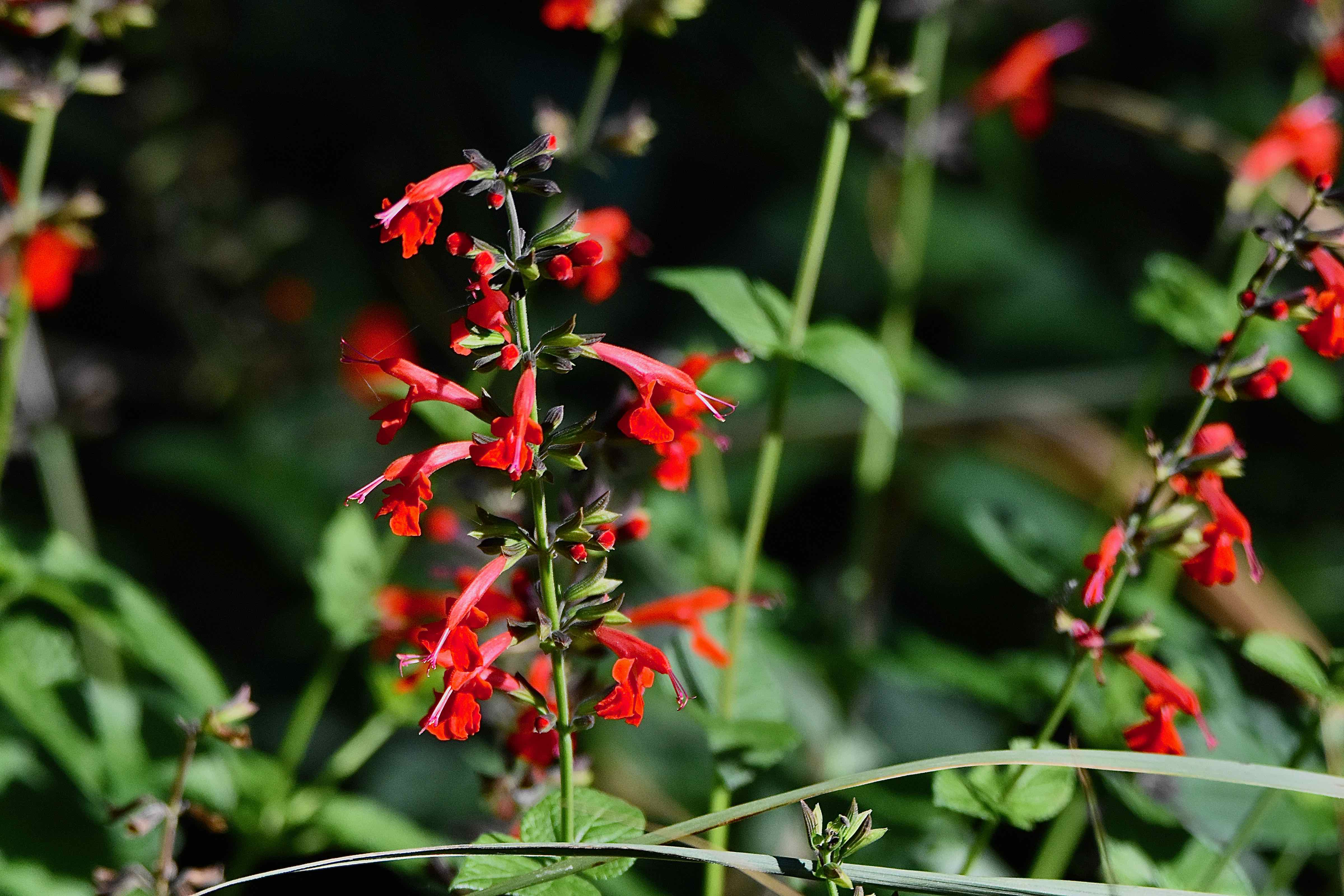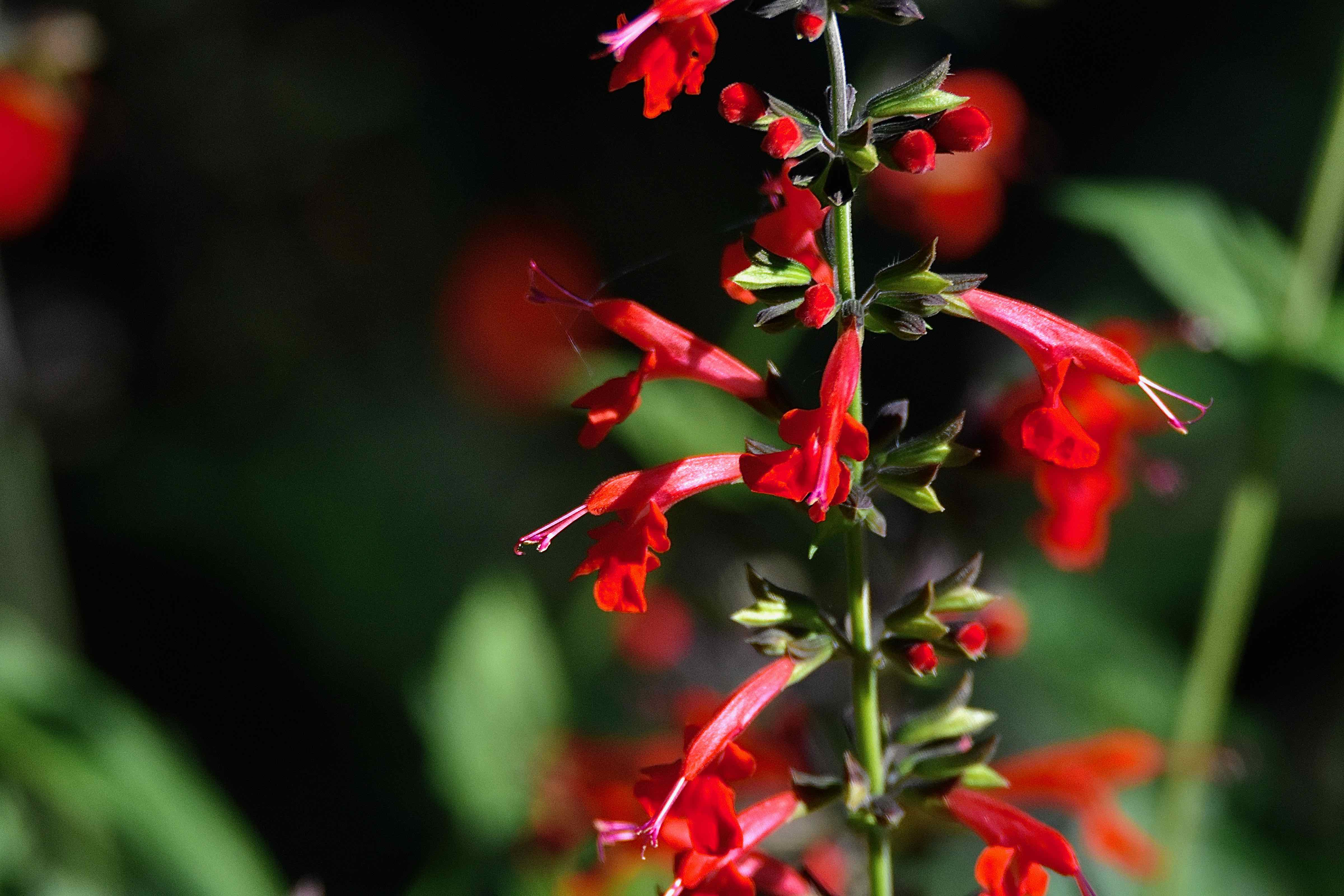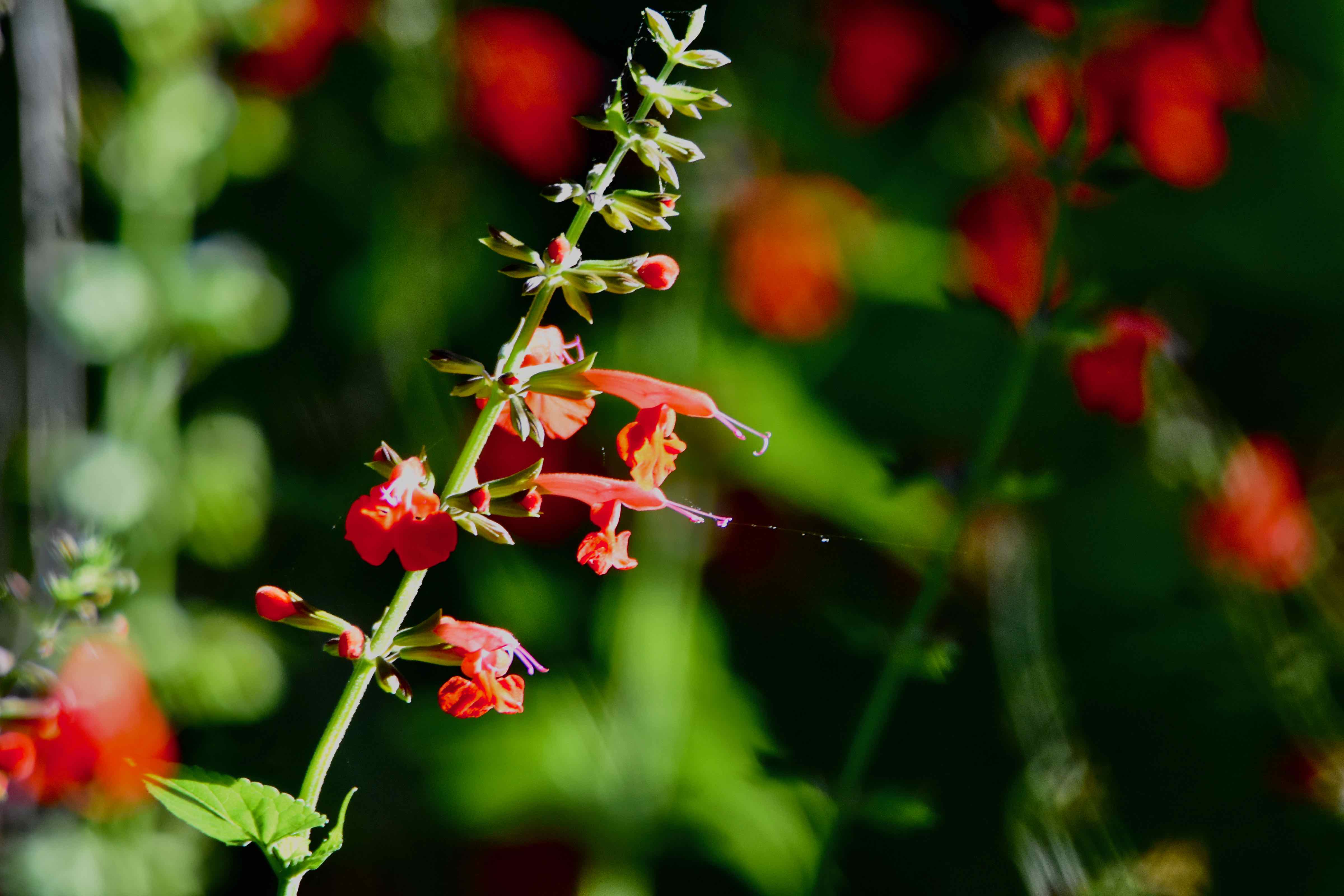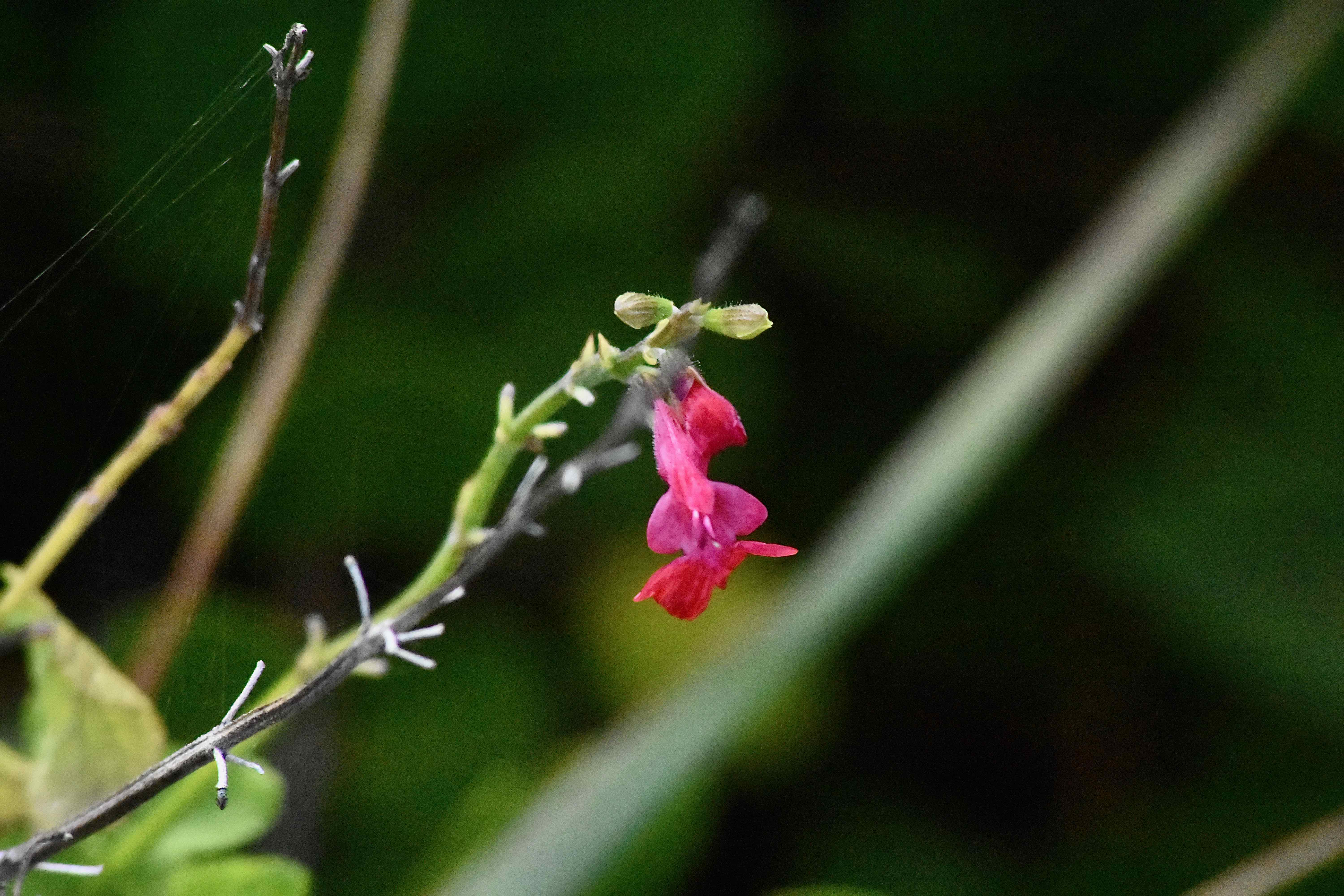
Tropical sage, photographed at Green Cay Nature Center, Boynton Beach, Palm Beach County, in January 2017.
By definition, native plants are those that made it to our fair land sometime before the first European explorers came ashore. Tropical sage, Salvia coccinea, qualifies even though it's most likely a transplant from somewhere else, just like the rest of us.
It's a rare plant, rarely found in the wilds of South Florida, but it's easy to grow, and frequently seen in landscapes that want to attract birds and butterflies, places like Green Cay Nature Center in Boynton Beach. The first three photos on this page were shot at Green Cay, the fourth, bottom right, was growing wild at Atlantic Dunes Park in Delray Beach.
First thing to know is that tropical sage is a member of the mint family, though as best we can tell it totally lacks any culinary virtue whatsoever. Most believe it originated in Central America and Mexico before creeping north into the southeastern United States some time before Ponce, de Soto and de Pineda wandered through in the early 1500s. Its American range extends from South Carolina to Texas, including Florida, plus one county in Ohio.
It's found in slightly more than half of Florida's 67 counties, scattered throughout the Peninsula, Panhandle, Tampa Bay and South Florida. It's become naturalized in other parts of the world, including Africa, Asia and Europe. In places, it's used medicinally. More on that in a bit.
The botantical basics: tropical sage is a perennial in warmer parts of its range, like South Florida, an annual farther north. It is a herbaceous plant, soft, not woody that grows three or four feet tall.
The leaves are simple, opposite, triangular in shape, with teeth along the edges. The flowers are tubular and generally deep red but can be pink and even white. Blooming season varies geographically, but here in South Florida, the flowers appear year-round, peaking in spring. There is a blue sage, also known as azure blue sage, but it is a separate species. It's also rare in South Florida.
Tropical sage likes rich, sandy soils, will take to a variety of light conditions from full sun to part shade, is drought tolerant and heat tolerant, a particularly important trait in South Florida, considering the hot summers. There are at least four cultivars, or varieties, on the market, including one called Lady in Red.
As we noted earlier, tropical sage has become naturalized over a fair portion of the globe and medically important in places. In South Africa, it's used to treat kidney disease and to relieve coughing from tuberculosis. In Madagascar, it's used to treat parasites, and in China, it's used to treat snakebites. Modern researchers say tropical sage might have anti-inflammatory and antioxidant properties. In fact, the genus name, salvia, derives the Greek word meaning to feel well. The other commonly seen word associated with the genus, sage, similarly derives. For us, tropical sage is a landscaping plant. It can be used as a border, ground cover, in wildflower gardens and for cut flowers. The deep-red flowers attract hummingbirds, warblers and nut hatchers, and many species of butterflies.
Other common names for tropical sage include, scarlet sage, Texas sage, scarlet salvia, hummingbird sage, blood sage and Indian fire. It is a member of Lamiaceae, the mint family.
Green Cay Nature Center



